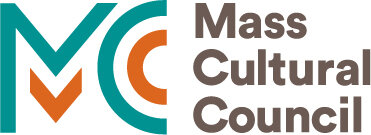Hannah Webster
“One day she brought yellow roses which she distributed... to those who claimed an uncorruptible faith in woman suffrage.”
As historian of Waltham High School’s class of 1919, Hannah Webster wrote about how her teacher, Josephine Hall, tried to cheer up students who lost friends and family in World War I. Yellow roses, a symbol of women’s suffrage, sent a hopeful message about exercising the power of the vote to attain world peace.
Hannah Webster
The Mirror, Waltham High School class of 1919 yearbook, Waltham Public Library
Hannah’s father, a grocer from San Francisco, had died when she was only two years old. She was raised by a single mother who worked for the Waltham Watch Company and kept a lodging house for watch company workers. Hannah grew up in this busy Robbins Street lodging house, which her mother owned outright in 1910. Her mother worked and paid property taxes but she could not vote.
Hannah’s mother and housemates must have heard suffrage speeches on their noon hour break from the factory. They may have been among the many Waltham Watch factory workers interviewed by women’s suffragist and lawyer Amy Acton in 1903. “When you ask one of these tax-paying women…if she thinks women taxpayers ought to be excluded from a vote as to how their money shall be spent, she gasps and says, ‘Of course not.’” (Women’s Journal, Jan 31, 1903) When hundreds of workers were asked to enroll in a women’s suffrage association, “not one woman refused to sign; and the men wanted to sign too.” (Women’s Journal, Jan 31, 1903)
Hannah was one of thirteen young women (and just four young men) who were on the College Preparatory track of Waltham High in 1919, when so many young men were overseas in the war. Most of her classmates also had ties to the watch factory, but her high school sweetheart and future husband Lester Richardson was more interested in farming. In the class prophesy written by a peer, she was destined to be serving others as a waitress, waiting five long years for Lester to propose. Lester chose the Technical track of Waltham High and went to college but Hannah did not. Lester graduated from Massachusetts Agricultural College (now the University of Massachusetts), worked for a milk business in Waltham and then managed a fruit farm in Amherst, Mass. The Richardsons had two children and eventually asked Hannah’s mother to join their household.
Hannah apparently never worked outside her home and there is nothing in her life after high school that suggests she was politically active or fought for women’s rights. She died shortly after her fiftieth birthday and was outlived by her husband.
REFERENCES
ancestry.com
Hannah Webster. “Class History,” The Mirror, Waltham High School Year Book, Class of 1919.
Woman’s Journal, January 31, 1903
Stonehurst Curator Ann Clifford wrote this biography in conjunction with “Anxious to Vote: Students, Workers and the fight for Women’s Suffrage,” a curriculum and public education project developed in partnership by Stonehurst the Robert Treat Paine Estate and Waltham Public Schools in commemoration of the national suffrage centennial in 2020. STONEHURST is a National Historic Landmark owned by the City of Waltham. The once-private estate of generous social justice advocates whose ancestors helped establish the democratic foundations of this country is now appropriately owned by the people.
The Friends of Stonehurst received support for this program through “The Vote: A Statewide Conversation about Voting Rights,” a special initiative of Mass Humanities that includes organizations around the state.
This program is funded in part by Mass Humanities, which receives support from the Massachusetts Cultural Council and is an affiliate of the National Endowment for the Humanities.






